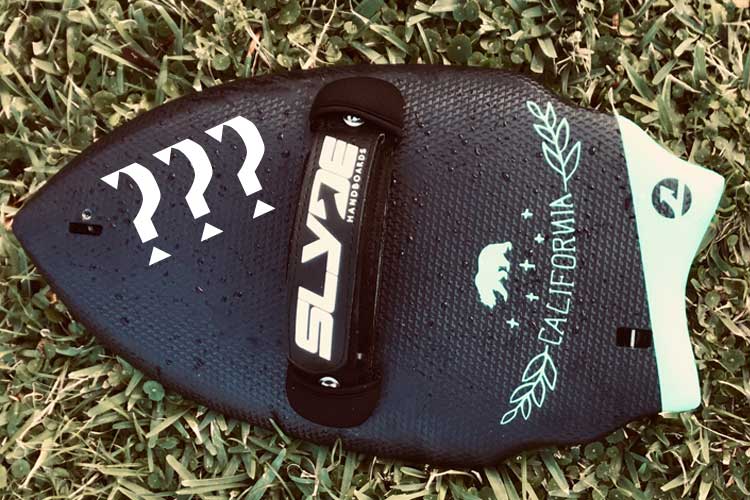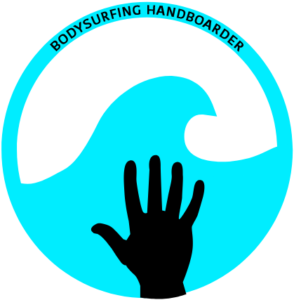
Have you witnessed this new trend of surfing where a little board is attached to your hand? In a sea of many surfers you may find some people bodysurfing with a handboard.
What is a bodysurfing handboard? It is a smaller version of a surfboard measuring no more than 20 inches that attaches to your hand using a strap. It allows you to easily ride waves better while bodysurfing.
Although bodysurfing still stands in the shadow of surfing, it is slowly rising from its watery grave thanks to the introduction of the handplane. Using a handboard is completely optional when bodysurfing.
If you don’t use a
what are other names for handplanes?
The terminology around handboards tends to vary greatly by geographic regions across the world. Below I have listed a few common names that it is most often referred to:
- handboard
- handplane
- handslide
- waveblade
- handgun
- handlid
- slyde board
- hand surfboard
- hand slide
I’m sure there are many more names to call this small board but I typically use the term “bodysurfing handboard” or “bodysurfing handplane” when describing this hobby to my friends and family. Now that you are well-educated regarding the abundant nomenclature of this piece of bodysurfing equipment, let’s check out how it works.
the physics behind handplanes
Want to know how a bodysurfing handboard works? It’s quite simple actually. It functions the same way a surfboard does, except on a smaller scale. If you have never surfed or do not know how a surfboard works, keep reading.
A surfboard does an excellent job of keeping you afloat while moving your body across the water’s surface. Body handplanes are designed to do the exact same thing. The construction of the board is geared towards delivering the perfect amount of buoyancy and lift to keep you skimming quickly across the surface.
I’m sure you a familiar with the principle of buoyancy. It is the force applied to an object submerged in water in an amount equal to that of the water displaced by the object in the opposite direction. So every time you place weight on your board, there is a perpendicular force that pushes you upwards away from the water’s surface.
Buoyancy is what keeps you and your board floating and moving along the water surface. A
There are also hydrodynamic forces that occur to propel you forward in addition to buoyancy. I won’t delve too deep into the details but just know that they exist and can be impacted by the board shape, size, and material.
body surfing hand plane dimensions
Handboards are manufactured in a variety of different sizes. At their longest point, you can expect these small surf boards to measure anywhere between 11 and 20 inches in length. At their widest point, these boards can measure between 7 and 10 inches across.
how much does a handboard weigh?
Handboard typically weighs less than 2 lbs (.9 kg). The lightest board I have seen weighs only 5 oz. Handboards are designed using a lightweight material so they hardly weigh anything at all.
These types of options give you the ability to choose based on your style or the type of waves you are riding. I have created a beginner’s guide to choosing the perfect handboard to help you select the right shape and size so make sure to check that out (coming soon!).
are handboards easy to store and transport?
Yes, Handplanes are very easy to transport and store because of their compact size. You can easily fit a handboard in your closet or under your bed.
You can purchase storage cases and carry bags for your handplane to maximize portability and protection. From personal experience, I can confidently tell you that carrying my handboard to the beach is a lot easier than carrying my surfboard!
If you have ever owned a surfboard, bodyboard, or skimboard then you know these can be difficult to store properly and transport due to their size. You have to be aware of your surroundings when carrying a surfboard on the beach because you could accidentally hit someone. You don’t have to worry about any of these issues with a handboard.
what material is a handboard made out of?
Different handboard brands use different materials to create their boards. You will find the following materials to be the most commonly used compounds to make handboards: wood, foam, epoxy resin, polyester resin, and hard plastics (i.e. polyethylene & polypropylene). Make sure to check out my post that details the materials used to manufacture handboards. They are typically durable, lightweight, and buoyant to deliver optimal performance.
is using a handplane safe?
Yes, using a handplane is generally very safe. Since the majority of bodysurfers typically ride smaller waves, there is less chance of injury.
If you happen to bodysurf waves larger than 5 feet then I highly recommend taking more caution. A churning 7-foot wave can easily drag a floatation device up the face of the wave possibly damaging your rotator cuff in the process if you are not an experienced surfer.
As you know, with any type of water sport there is always a risk. You are fully exposed to the power of the ocean but this is a common understanding among the surfing community.
who should use a handplane?
You can use a handplane whether you are a beginner or an expert. They are user-friendly and simple enough to learn that you can catch a long ride on your first wave! Your skills will also get better the more you use it.
Handplanes have made an appearance in the world bodysurfing competition but the elite are on a whole different level. The average bodysurfer will definitely benefit greatly from using one.
how old do you have to be to use a handboard?
Handboards are perfect for all ages but please be mindful of the limitations of your own body and fitness. I’ve seen 7-year-olds
how long do handplanes last?
How long your
If I had to estimate the lifespan of a handboard I would estimate anywhere between 2 and 10 years but there are delimiting factors. Below I have listed the common factors that play a role in the lifespan of your handboard:
Frequency of use
Handboarding style
Materials
Storage
Maintenance & care
Hanboarding location
This is probably obvious but the more wear and tear that your board is exposed to the more you shorten its lifespan. If you have an aggressive style of handboarding this also puts more stress on your board, causing it to lose its integrity in the long run. Another important factor to consider is the type of material the board is made of so make sure to purchase a durable handboard.
The location that you store your board, such as inside vs outside, can impact your hand impact how long your handplane lasts. Also, if you go handboarding on a rocky shore that will certainly beat up your board quicker than a soft, sandy beach. Lastly, performing routine maintenance and care can expand the life of your handplane.
how much do handboards cost?
Wondering how much handplanes cost? It really depends on the type of board you buy.
Similar to surfboards and skimboards, handboards vary in price as well. You can find cheap bodysurfing handboards for sale that cost just under $50 like the Thurso. On the other end of the price spectrum, you will find high-end handboards that cost around $200 like the Slyde Wedge.
Due to such a variance in handboard prices, you need to consider how much you are willing to spend before investing. Make sure to check out my detailed handboard price guide that will help you make decisions based on your budget.
